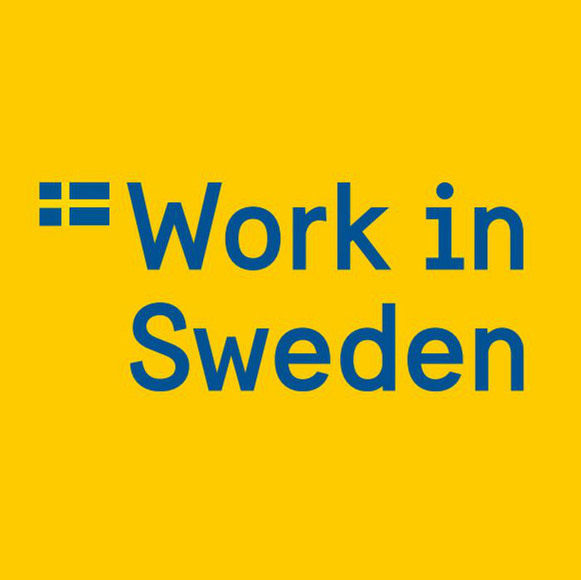A country of innovation
Sweden tops global innovation rankings – let’s uncover why.
What shapes innovation in Sweden?
Innovation in Sweden is about more than the vital startup scene – the country has a long history of innovation.
There are several factors that might explain why. Sweden believes in the value of education and knowledge, and there is a high degree of equality. The result is a highly skilled workforce.
The country also has a supportive and well-developed research climate, where government, businesses, universities and citizens team up to find the next great idea. And let’s not forget the Swedish work environment where flat hierarchy makes space for creativity and innovation.
Could the weather be a factor, too? Those long and cold winters are the perfect excuse to stay inside and think.
And all this on a foundation of social stability and a strong democracy.
A capital of unicorns
Unicorns are startups valued at more than USD 1 billion. Stockholm has more unicorns per capita than London, New York or Los Angeles!
Mojang and King, creators of Minecraft and Candy Crush Saga, are examples of unicorns that have gone from startups to scaleups to gaming giants. Some more recent unicorns are healthtech provider Neko Health, energy storage innovator Polarium and autonomous transport company Einride.
Stockholm is a melting pot of innovation, venture capital and culture. The relatively small size of the city can be another explanation for its success story: top universities and innovative companies are often within walking distance of each other.
In 2025, the European Commission ranked Stockholm as the most innovative region in Europe.
The importance of education
Sweden’s long-term focus on education and research has had a major impact on the capacity for innovation. In 1842, the country introduced compulsory schooling for 7- to 13-year-olds (today for 6- to 15-year-olds). This was a game-changing move, as it raised the overall level of education among the people, and became a vital component in Sweden’s journey from poor agricultural nation to prosperous innovation leader.
Today, about one-third of the population and more than half of the people between 25 and 34 have higher education.
How much does Sweden invest in research?
Sweden is committed to research and development (R&D), investing more than 3 per cent of GDP in R&D, year after year. This is paying off: Sweden is one of the top countries when it comes to turning great ideas into intellectual property. In 2024, Sweden ranked second in Europe in the number of patent applications per million inhabitants, according to the European Patent Office.
Green technology and life sciences are two fields in which Swedish researchers and companies excel. The government has created an office of life sciences dedicated to developing and implementing a national strategy for the life sciences to further promote the field. Also, Sweden’s climate-tech sector is one of the most dynamic in Europe, with about 500 active companies.
Sweden and road safety
Sweden's ‘Vision Zero’ is a road safety role model based on the idea that no one should be killed or seriously injured as a result of traffic accidents.
Well-functioning infrastructure
Sweden is a large country, stretching far from north to south. This is why a well-functioning infrastructure has been vital to Sweden’s development – from railways to telecommunications and broadband. Policies offering access to technology and the internet have contributed to making Sweden the innovative nation it is today.
In the 1990s, the Swedish government pushed out a widely developed broadband network and Swedes’ early access to fast internet coupled with subsidised computer-lending programmes helped cultivate a society of early adopters.
5G and Ericsson
We are now in the era of 5G. The fifth generation of mobile networks is important to Sweden, not only because it offers higher capacity, but also because mobile systems are a core export product.
Ericsson, one of Sweden’s largest companies, has dominated the development of 5G. The telecom company and its work on 5G are part of a major ICT cluster in Kista and Stockholm with 100,000+ employees across 40,000+ businesses. This tech ecosystem gives Sweden a great opportunity to contribute to digital transformation of society, locally and globally.
Key players
Government agency Vinnova plays a central part in Swedish research. The innovation agency promotes and funds research projects in a wide range of fields, from health and transport to industrial material and smart cities.
To strengthen Sweden’s competitiveness, the Knowledge Foundation (KK-stiftelsen) funds research and competence development at Sweden’s university colleges and new universities.
The Swedish Agency for Economic and Regional Growth (Tillväxtverket) also strengthens competitiveness and facilitates entrepreneurship around Sweden.
Ranking high
Considering that Swedes represent just 0.13 per cent of the global population, the Nordic nation has a disproportionate amount of influence on global innovation. On several occasions, Sweden has topped the European Innovation Scoreboard, a yearly index published by the European Commission. The index assesses the strengths and weaknesses of national innovation systems and helps countries identify areas they should address.
Sweden also usually achieves high rankings in innovation surveys such as the Global Innovation Index and the Legatum Prosperity Index.
Swedish life science research hubs
Land of opportunities
In the IMD World Competitiveness Ranking, Sweden ranks as one of the most competitive countries in the world, with top grades for business efficiency and infrastructure.
Swedish society is based on strong democratic values, where free thinking and cooperation is encouraged and it’s okay to try and fail. Today, democracy is more than a moral principle; it’s a competitive advantage. Openness promotes pioneering ideas and stability breeds trust.
Has Sweden found the key to being both bold and predictable?
Sweden is hiring
Many Swedish companies seek new talent from all over the world. Great things can happen when people with different backgrounds work together. Are you curious? Click below.




